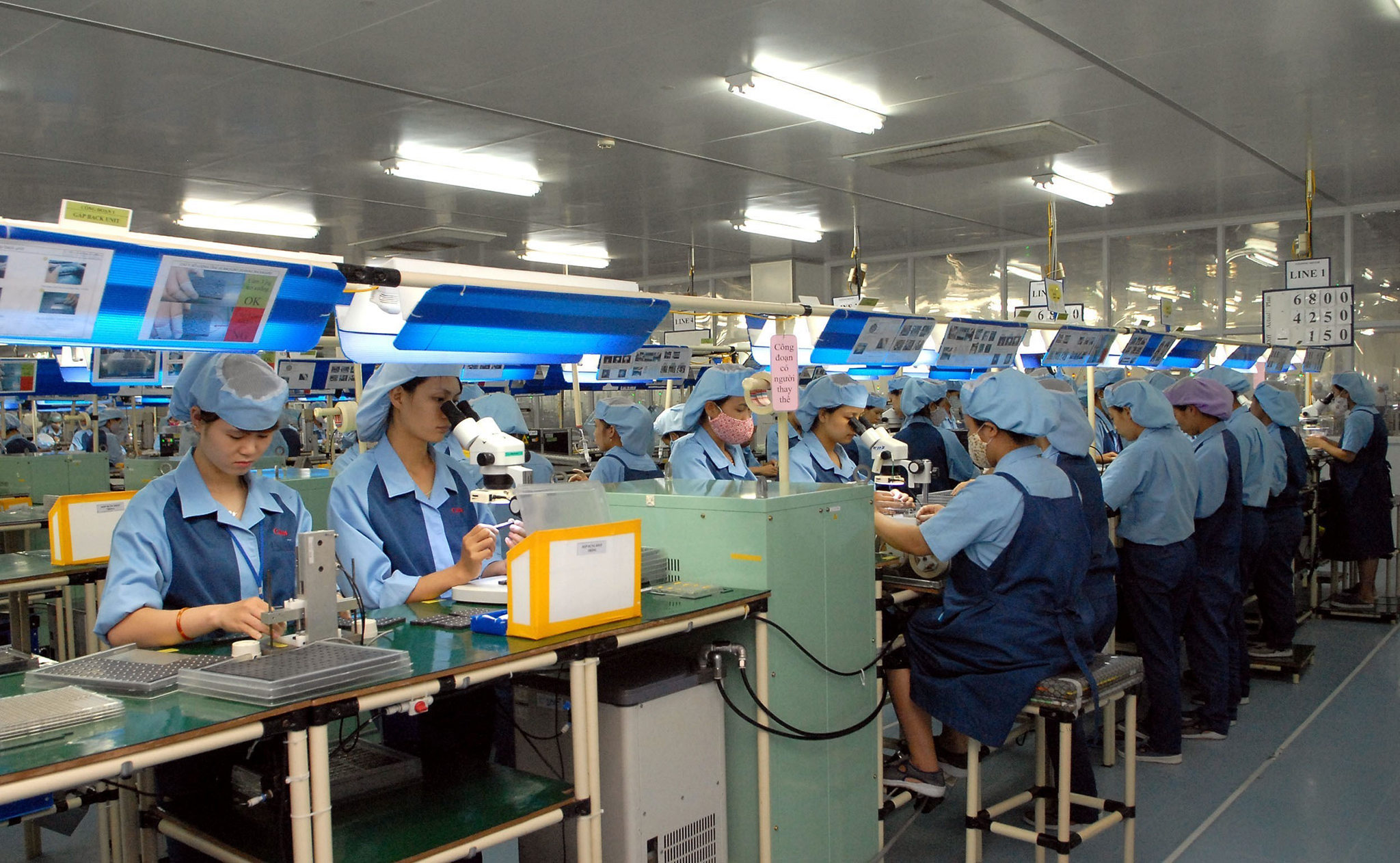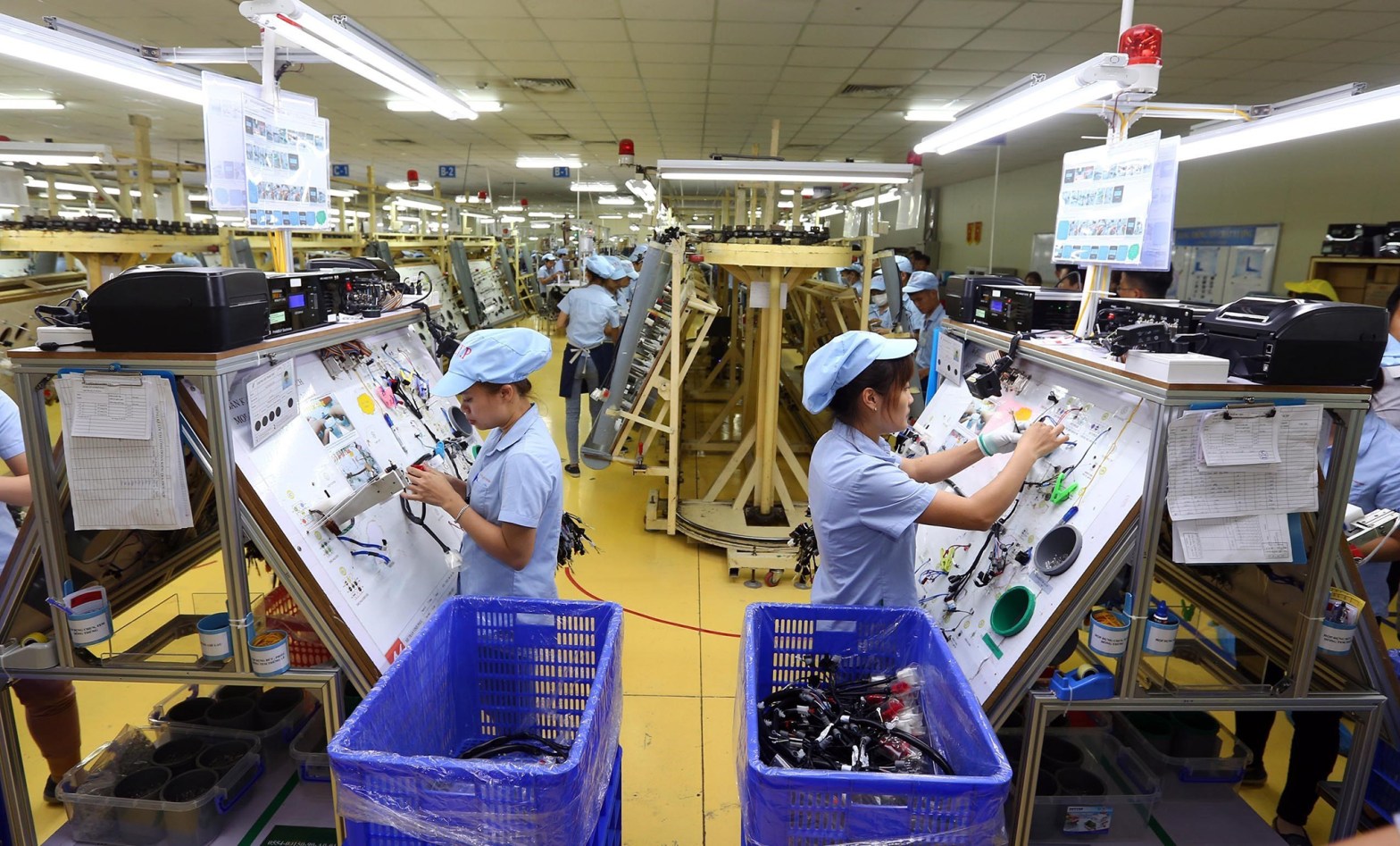2018 continues to be a year full of outstanding achievements in socio-economic development, as all the 12 targets have been completed and exceeded the National Assembly-set goals. It was an important driving force for successful implementation of tasks set for 2019.
Speaking at the Government’s conference with localities on December 28, 2018, Party General Secretary and State President Nguyen Phu Trong emphasised that many important and encouraging outcomes were achieved in most of the fields in 2018.
On the basis of the achievements, the leader proposed that the Government, ministries, and sectors strive to achieve higher results in all fields in 2019. Dr. Nguyen Dinh Cung, Director of the Central Institute for Economic Management (CIEM) and member of Prime Minister’s economic advisory team, talks to Vietnamplus about the targets set for 2019. – What were the key factors helping Vietnam’s economy achieve the simultaneous goals of high growth and low inflation below 4 percent in 2018? There are many reasons for these outcomes. In my opinion, the achievements in 2018 are highest and most comprehensive in the last decade. It can be said that the first highlight is fundamental reforms on economic institutions in this tenure that have created a more favourable business environment, along with resolutions of the Party Central Committee, especially the one on major guidelines and solutions to promote economic restructuring, and the economic growth model switch towards improving quality and efficiency. In addition, there are three important others, namely the resolution on perfecting institutions of the socialist-oriented market economy; the resolution on rearranging, reforming, and improving state-owned enterprises; and the resolution on developing the private sector into an important driving force of the economy.

Half of the companies rated the business environment of 2018 much better than 2017.
Following these resolutions, the Government has implemented action programmes with strong reforms to improve the business environment.

The abolition of business conditions also saw progress with half of them removed and the remaining waiting for implementation guidelines in the following years. In particular, in 2019, a series of simplified business conditions will impact the business community depending on the implementation of decisions.
Thus, ministries need specific guidelines, while localities must direct the organisation of implementation more thoroughly to ensure that all reforms benefit the business community.
In 2018, the macroeconomic stability was well maintained. Despite unfavorable external fluctuations, the PM and the Government took the initiative in developing options and implementing solutions to mitigate adverse impact and take advantage of opportunities.
I also see that numerous localities have actively conducted reforms and improved the competitiveness index, especially in investment attraction, contributing to mobilsing social resources for development.
– With the above-said premises, what do you think of the development opportunities in 2019?
In 2019, the Government is putting forward a clear message of “the year of breakthroughs” to fulfil the tasks and targets of the 2016-2020 tenure. Breakthroughs are necessary to prepare a better basis for implementing socio-economic development tasks in the 2021 tenure and the following years.
As we know, in 2016-2018, many solid achievements were obtained in terms of macroeconomic stability, resilience, and an increase in economic momentum through growth.
On the basis of the outcomes, in 2019, the operation of the Government and the PM must speed up the implementation of solutions on reform, and improvement of the business environment, creating more resources, and increasing economic growth momentum.
This is based on the maintenance of macroeconomic stability, economic restructuring, and model shifting so as to further increase factors on growth quality, while attention is paid to solving social issues, aiming for inclusive development, and ensure all feel benefits in the development process.
– At a recent meeting, the advisory team proposed three growth scenarios. The Government has set a target of 6.9-7 percent growth and inflation below 4 percent for 2019, could you share some further detail on this as a member of his economic advisory team?
The National Assembly issued a resolution, which sets the economic growth of 6.6-6.8 percent and inflation at about 4 percent.
However, based on the attainments recorded in 2018 and an analysis on the economic potential to accelerate the progress along with outside opportunities, the team agreed to propose that the PM push management to achieve the goal on a growth rate higher than the NA-set target.
In the opinion of the team, if we can do that, more room will be created and the economy’s resilience increased. In the current context of uncertainty, we need a method of operating to respond to changes from the outside, especially in the field of operating macroeconomic, fiscal, and monetary policies.
If there is such a determination, the Government’s message is the basis for the PM to operate more drastically and create a stronger pressure on ministers and chairmen of local People’s Committees, and the whole political system, thereby creating the confidence of market and businesses to arouse the dynamism of the economy and get an outcome better than expected.
– The set GDP growth target for 2019 is based on two main driving forces: the manufacturing and processing industry, and services. What is your assessment of the two areas’ potential towards making a breakthrough in economic growth?
We still consider the processing industry and services as the main contributors to the growth. But to determine their potential, we must look into the issue in a deeper and more specific way to truly evaluate it.
First of all, the manufacturing and processing industry still contributes a great deal to growth. The field’s scale is relatively large, and the growth rate is also high, so the best bet is to strive to keep it on the track, keeping it on the rise and thereby maintaining contribution to the economic growth.

Let’s look at industries and products that have small potential and scale whose growth rate will not push development.
For example, tourism services are promising and post relatively good growth; or the wholesale and retail sector can be utilized more easily to contribute to growth; or scientific and technological research and development services. These are areas that make small contributions and record relatively low growth rates, but are able to be intervened so that less resources can be poured into them but they can create high growth rates. We still consider agriculture a contributor to growth that we have yet to fully tap, proposing fundamental solutions such as the flexible management of land-use purposes; adjustment of land-use plans (especially agricultural land) so that farmers, cooperatives, and enterprises can be active in selecting products, crops, and livestock for production in line with market demand. If we shift ineffective paddy fields into areas for other crops, such as vegetables, flowers, or aquaculture, the added value will be 7-15 times that of rice cultivation. These are great areas for potential, as well as for foreign investment attraction. Although there are outside fluctuations, we can still see opportunities for imports and exports to maintain the 2018 level. From the above-said preliminary analysis, we think that there is a lot of room. The problem is the flexible, consistent, and drastic operation of the Government and PM; the implementation by ministries, sectors, and localities; as well as continued investment by businesses. – You said 2019 is the year of Vietnam’s deep integration with high-quality trade agreements like the CPTPP and the EVFTA, so what are some of the challenges for Vietnam in this issue?

